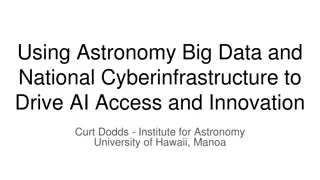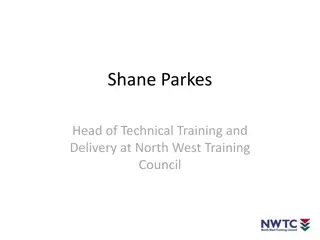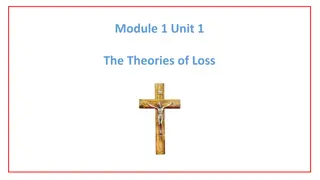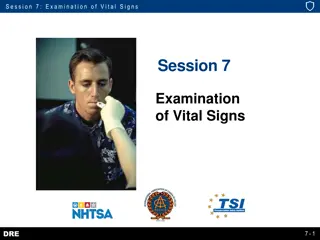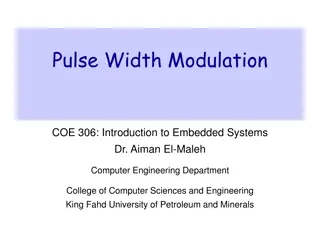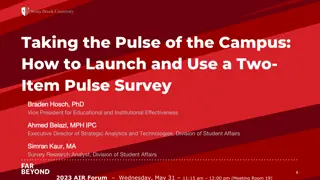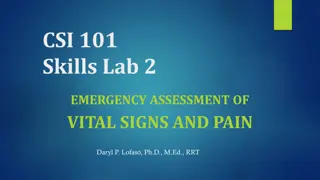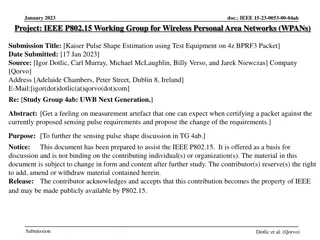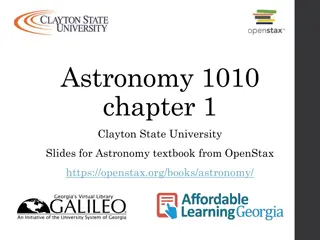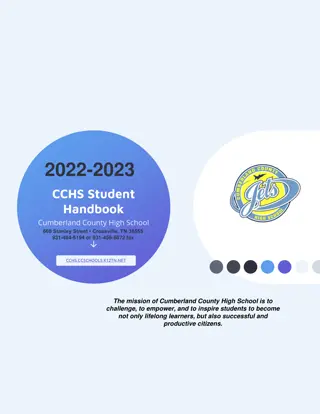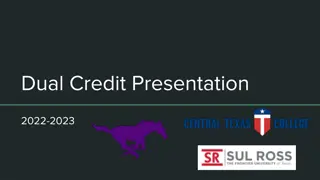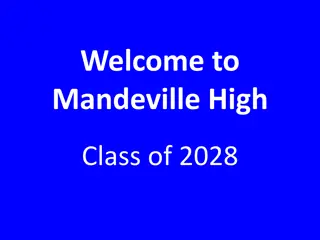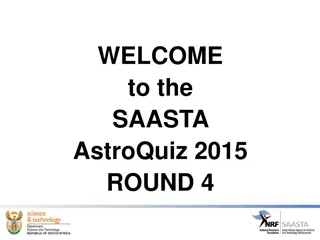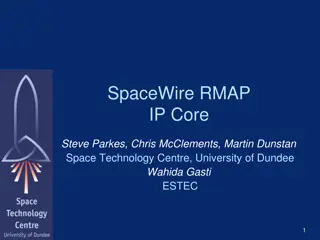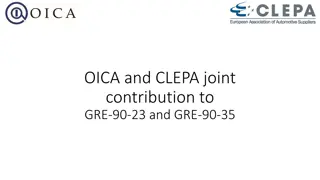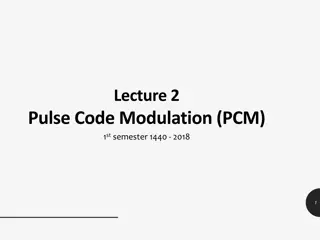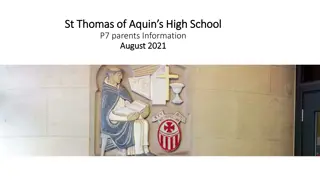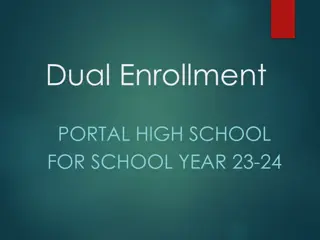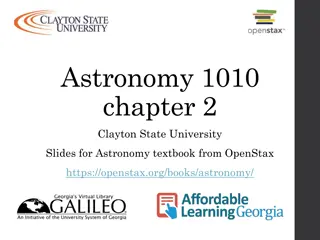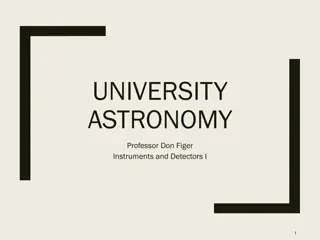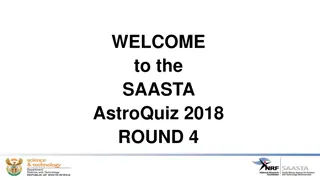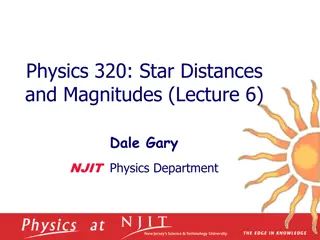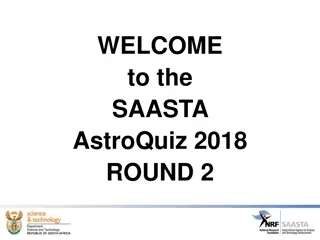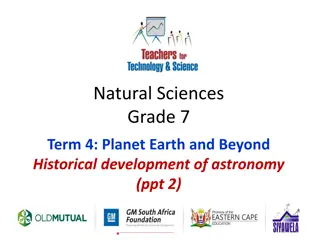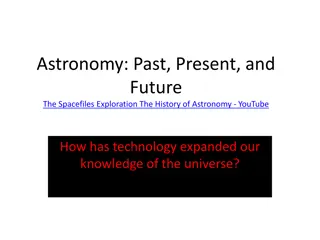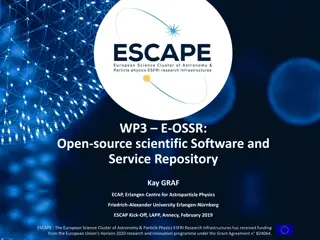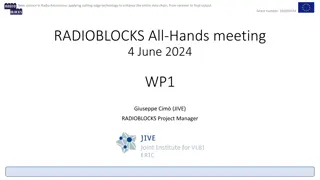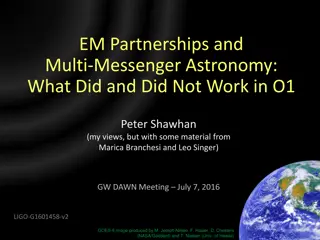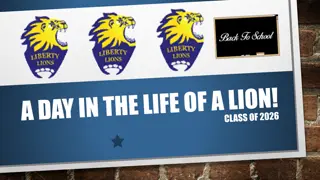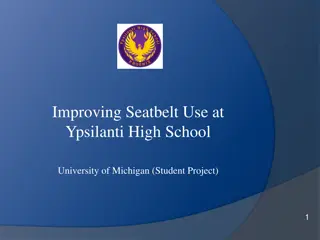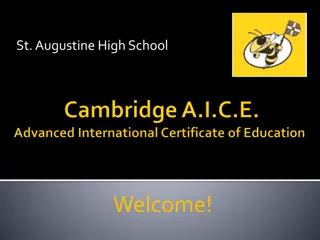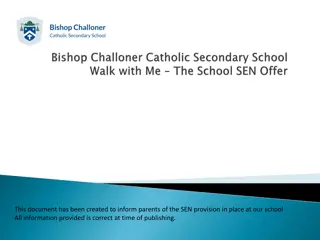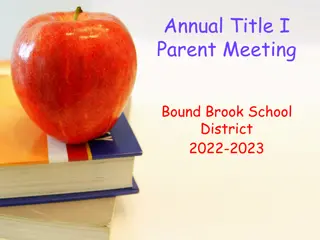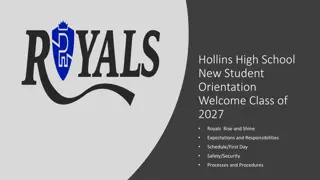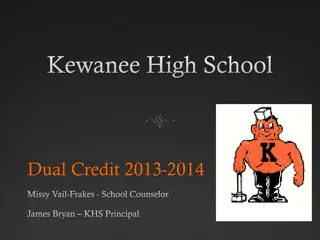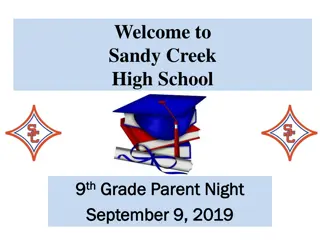PULSE@Parkes: Engaging High School Students in Astronomy Education
PULSE@Parkes is a program where high school students collaborate with professional astronomers to conduct remote observations using the Parkes radio telescope. The program offers hands-on experiences, online modules, and data sessions for students in years 10-12. Students also have the opportunity to work on open-ended investigations and projects based on the data sets. With a strong track record of engaging students and teachers, PULSE@Parkes has been expanding its reach nationally and globally, fostering interest in astronomy and science among young learners.
- Astronomy Education
- High School Students
- Parkes Radio Telescope
- Professional Astronomers
- Remote Observations
Download Presentation

Please find below an Image/Link to download the presentation.
The content on the website is provided AS IS for your information and personal use only. It may not be sold, licensed, or shared on other websites without obtaining consent from the author. Download presentation by click this link. If you encounter any issues during the download, it is possible that the publisher has removed the file from their server.
E N D
Presentation Transcript
Pivoting PULSE@Parkes Online Twitter: @PULSEatParkes Robert Hollow| July2021 Australia s National Science Agency
Murriyang - the Parkes Radio Telescope In the Wiradjuri Dreaming, Biyaami (Baiame) is a prominent creator spirit and is represented in the sky by the stars which also portray the Orion constellation. Murriyang represents the 'Skyworld' where Biyaami lives. We acknowledge the Wiradjuri people as the traditional owners of the Observatory site. Credit: S. Amy 64m diameter
What is PULSE@Parkes? High school students carry out remote observations with CSIRO s Parkes radio telescope. The students interact with professional astronomers The students carry out simple processing tasks. Some students do follow-up projects based on the data sets.
PULSE@Parkes https://pulseatparkes.atnf.csiro.au/ Hands-on remote observing with 64m Parkes Dish studying pulsars Work with professional astronomers & PhD students Online module & data Data & sessions streamed online Free Yrs 10 -12 Options for open-ended student investigation & projects
Current team members Rob Hollow Coordinator & Education Lead Andrew Zic Charlotte Sobey Jimi Green George Hobbs Science Lead SukYee Yong Rui Luo Lawrence Toomey + many previous members
Pre-COVID Progress Since December 2007 ~ 2,100 students, ~ 360 teachers, 3 science papers >180 (210) schools Yrs 10-12, some 9s and 7s Strong repeat demand from schools Strong engagement from girls schools Sessions in most Australian states Sessions in UK, Netherlands, Japan, China, South Africa, Canada, USA, NZ
2020 COVID hits Mid-March 2020 staff had to work from home where possible, students remote learning, no visitors to sites. PULSE@Parkes sessions already scheduled through September Due to use of browser-based telescope interfaces, and Webex video conferencing system we decided to trial remote sessions.
Linking the Parkes telescope with high school students: remote operations PULSE@Parkes students were the first to carry out main-stream remote observations with the telescope 2010 session in Marsfield Lecture Theatre
Remote observing CSIRO: PULSE@Parkes | Robert Hollow |
Notes from 2009: Development of an immersive environment for PULSE@Parkes How can students get an immersive experience of observing at Parkes? Webcam Sound Communication with telescope experts Issues with firewalls, security, available bandwidth, hardware available in schools, access to CSIRO networks
School trial with telepresence systems in 2014 (J. Zic et al.) Suggestions to trial: TeamViewer as it allows both videoconferencing and remote desktop access and control cost up to $2,800 for an unlimited license Trial a desktop version of CSIRO s 4 screen Collaboration Platform system composed of: A multi point telepresence session External users need to register and install the Cisco Jabber for Telepresence client on their machine(s) The single biggest issue with solution is firewalls. Either ours, or any other firewall, could actually prevent connection to this common account. Ended up being too complicated to get working
Linking the Parkes telescope with remote high school students: Virtual Work Experience Part of VWEP trial in 2019: 5 students in 3 states, 1 week Use Webex video conferencing
Progress 25 March - internal test session 29 April session to acquaint CSIRO Education & Outreach staff, 35 participants 7 May first remote school session, 2 Queensland schools Now standard mode
Progress since March 2020 Total 16 sessions for schools, undergraduate scholars, teacher and special events ~ 230 students, 6 states & territories ~ 35 schools*; 25 Government, 6 Catholic, 3 Independent (one of these onsite June 2021) * Excludes BHP Award Finalist schools
Progress since March 2020 Special sessions: Young Indigenous Women s STEM Academy ( 2 sessions, total 50 students) BHP Foundation Science and Engineering Award Finalists (12 students) Virtual Work Experience (3 students) Online teacher workshop with 12 teachers across Australia CSIRO Education & Outreach staff session 35 staff 2x Undergraduate vacation Scholarship student sessions
Virtual Work Experience Program https://www.csiro.au/en/care ers/Scholarships-student- opportunities/work- experience 1 student extension NSW Science project with Shi Dai 2021 program just announced!
Staff & Teacher training Session for 35 CSIRO Education & Outreach staff Online teacher workshop Feb 2021, 12 teachers.
In person Pros More interactive Better student engagement More relaxed Sense of occasion visiting site Wow factor! Cons Requires whole/most of school day Travel costs Lack of accessibility to non- urban schools Limited numbers ~ 24 students max
Online remote Pros Greater reach and equity Less demand on school time No travel costs Higher numbers can participate per session Can use breakout rooms More staff for short segments Cons No direct control of telescope Student interaction highly variable Reduced wow factor? Staff feel less engaged in some sessions Reduced PhD student presence
Where to now? Now offer remote sessions as standard Option for onsite once COVID restrictions settle down Improving website, support materials and tools Investigating method of giving schools control with staff override Cyber security issues Keen for proper evaluation
Where to now? Ongoing teacher training, preparation and feedback Working with some schools and education bodies on extended depth study options, use the session as a context Exploring ways to improve student engagement and session interactivity New website soon
Online- remote works! But still not as engaging as face to face
Thank you CSIRO Space & Astronomy Robert Hollow Education Manager E: Robert.hollow@csiro.au P: + 61 2 9372 4247 Twitter: @roberthollow www.csiro.au Australia s National Science Agency



